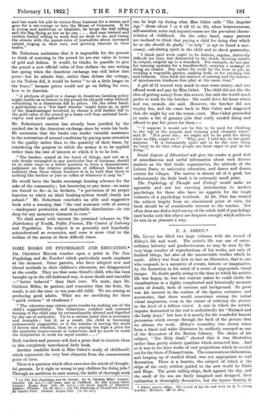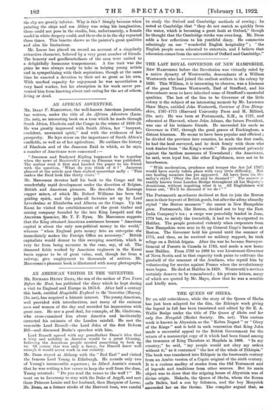E. A. ABBEY.*
Ma. Lucas has filled two large volumes with the record of Abbey's life and work. The artist's life was one of extra- ordinary industry and productiveness, as may be seen by the very large number of reproductions of his works, not only of finished things, but also of the innumerable studies which he made. Abbey was from first to last an illustrator, that is, one who responds to a narrative of events, historic or imaginative, by the formation in his mind of a series of appropriate visual images. No doubt partly owing to the time at which his artistic life was begun, he was not content unless he could clothe his visualizations in a highly complicated and historically accurate series of details, both of costume and background. So great was his interest in the realism of the figures, costumes, and accessories, that these would sometimes swamp the initial visual inspiration, even to the extent of reducing the picture to the level of a tableau vivant A case in which the artistic impulse dominated to the end is undoubtedly his "Richard and the Lady Anne," but here it is mostly for the wonderful funeral procession which sweeps through the back of the picture that we admire the work. Abbey's versatility was shown when from a black and white illustrator he suddenly emerged as one of the decorators of the Boston Library. The choice of his subject, "The Holy Grail," showed that it was illustration rather than purely artistic qualities which attracted him. And so it was in the later works of vast proportions which he carried out for the State of Pennsylvania. The conscientious elaboration, and heaping up of studied detail, was not appropriate to wall decoration. There is a lunette, the subject of which is the ships of the early settlers guided to the new world by Faith and Hope. The great sailing ships, dark against the sky, and the swell of the sea are finely imagined and designed, their realization is thoroughly decorative, but the figures floating in !, Edwin Austin Abbey. The record of his life and work by E. V. Lucas, London : Methuen. [1.8 Cs. net,: the sky are greatly inferior. Why is this ? Simply because when painting the ships and sea Abbey was using his imagination, these could not pose in the studio, but, unfortunately, a female model in white drapery could, and there she is in the sky repeated three times. This lunette shows us the painter's great qualities and also his limitations.
Mr. Lucas has placed on record an account of a singularly attractive character, beloved by a very great number of friends. The honesty and goodheartedness of the man were united to a delightfully humorous temperament. A fine trait was the pains he was always ready to take in helping young artists and in syntpathizing with their aspirations, though at the same time he exacted a devotion to their art as great as his own. With marked capacity for enjoyment he was nevertheless a. very hard worker, but his absorption in his work never pre- vented him from knowing about and caring for the art of others, living or dead.



































 Previous page
Previous page